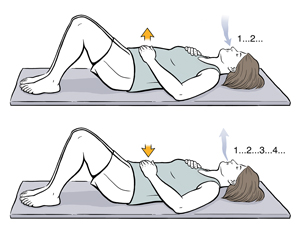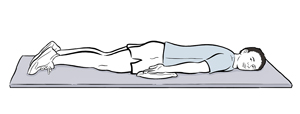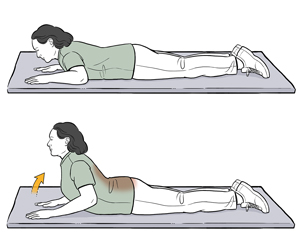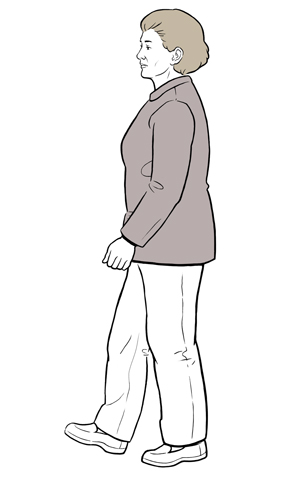Movement is one of the best ways to treat back pain. Your healthcare provider may recommend exercises to help you manage your pain, speed healing, and prevent future flare-ups.
Talk to your healthcare provider or physical therapist about which exercises are best for you and your rehabilitation goals.
Start each exercise slowly. A little discomfort is normal but stop any exercise that causes pain.
Belly Breathing
-
Lie on your back with your knees bent and feet flat on the floor. You can also perform this exercise while lying in bed with your knees supported by pillows.
-
Place one hand on your chest and one hand on your belly.
-
Breathe in slowly through your nose. Count to 2. As you breathe in, your belly should move out against your hand. Your chest should stay still.
-
Breathe out through your mouth with your lips pursed together. Count to 4. As you breathe out, you should feel your stomach move in.
-
Practice this breathing method for
2 minutes.
Tip:
-
Counting as you breathe in and out helps keep your breathing slow and steady.
Prone Lying
-
Lie face down on your stomach, either on the floor or in bed. You can place a pillow under your stomach and pelvis for comfort if needed.
-
Keep your arms relaxed at your side. Keep your breathing relaxed.
-
Continue to lie in this position for
3 to5 minutes.
Prone Press Up
-
Lie face down on your stomach. Your elbows should be tucked into your sides.
-
Press up on your forearms, keeping your hips on the floor.
-
Hold for
5 to10 seconds. Then lower slowly. -
Repeat
5-8 times.
Tips:
-
Relax your stomach muscles and low back completely as you press up.
-
Stay within a pain-free range.
Walking
Walking is a great way to improve blood flow and ease pain. Even short walks can help. Make a habit of walking every day. If walking makes your pain worse, try walking in a pool to reduce the pressure on your back.
-
Start by walking for
10 minutes every day. -
Over time, work up to walking for
30 minutes or longer.





